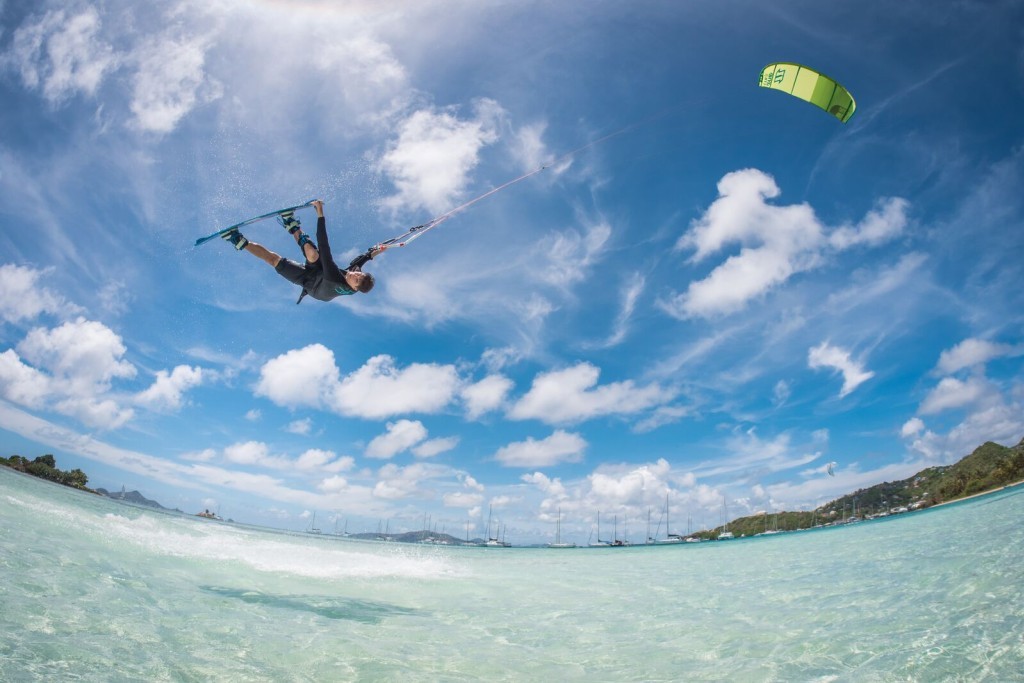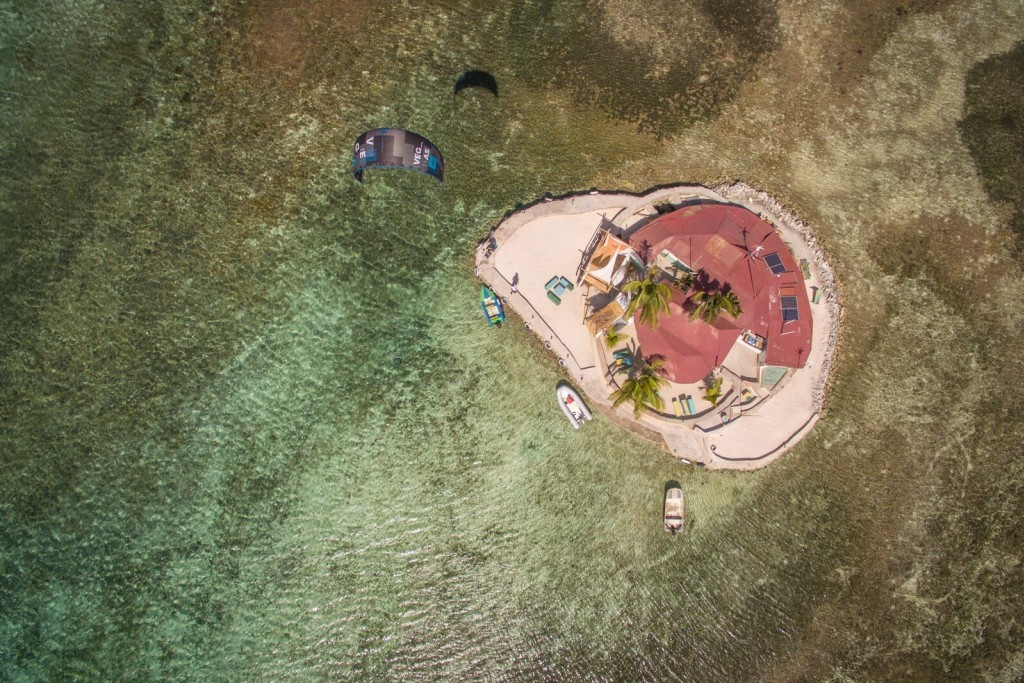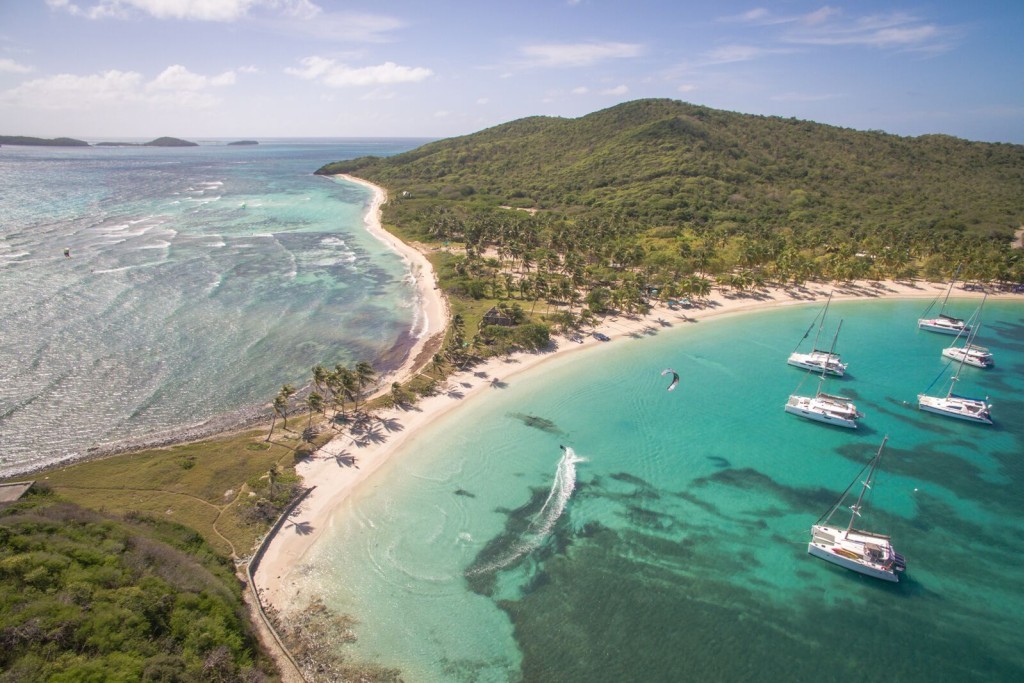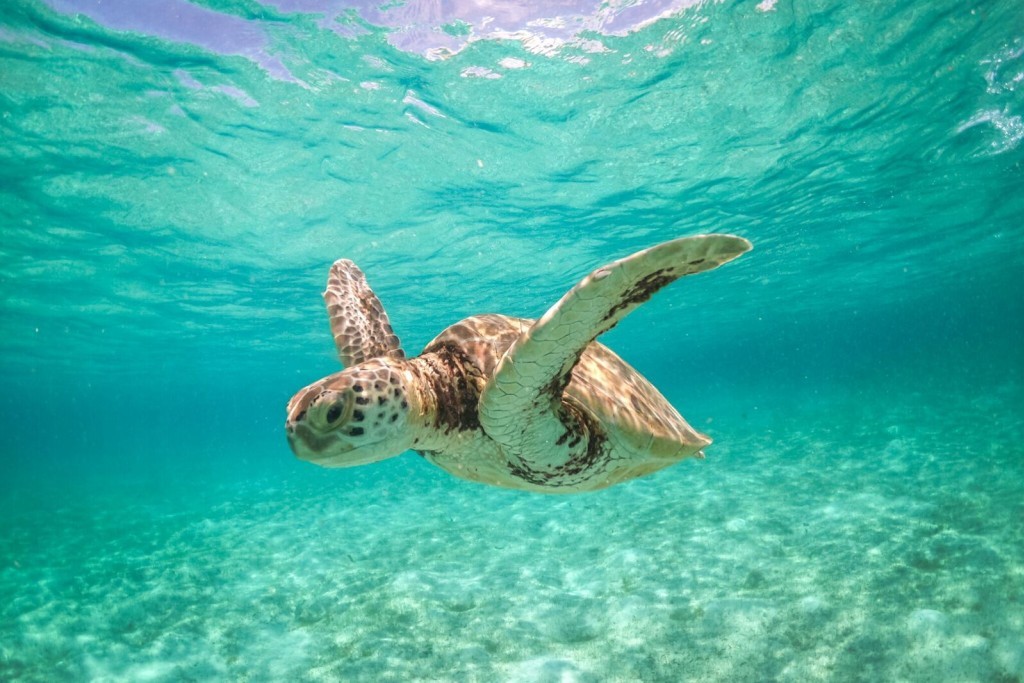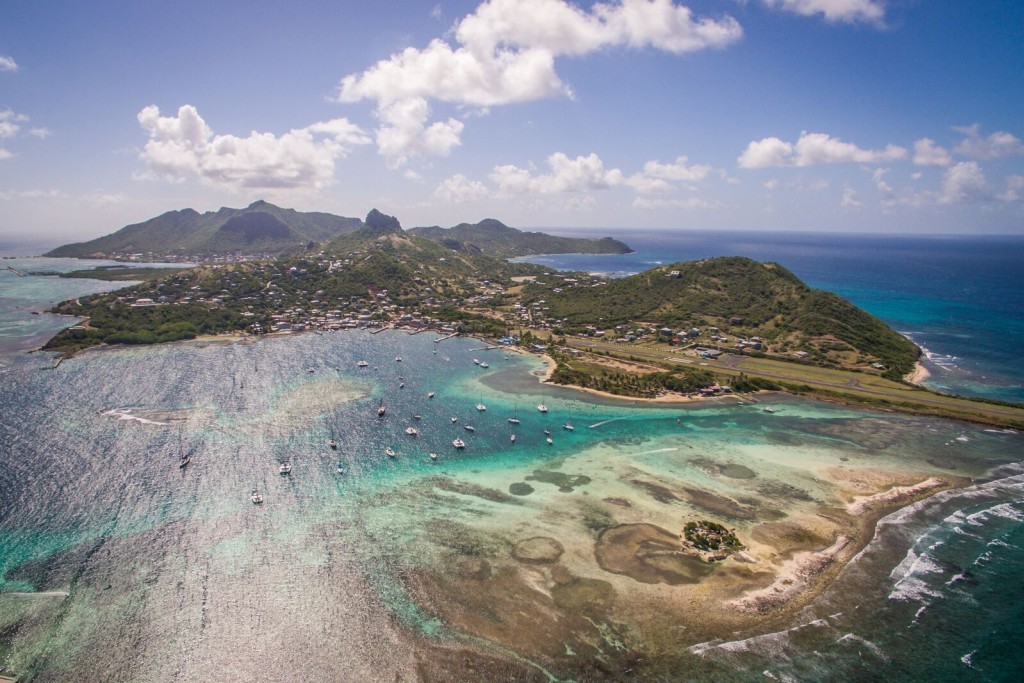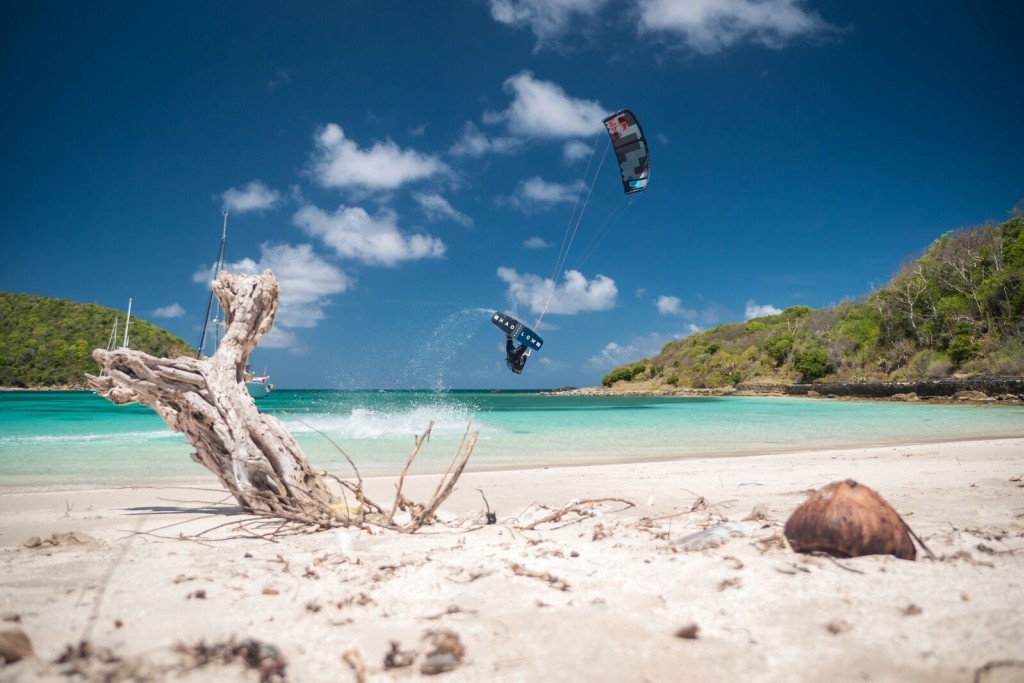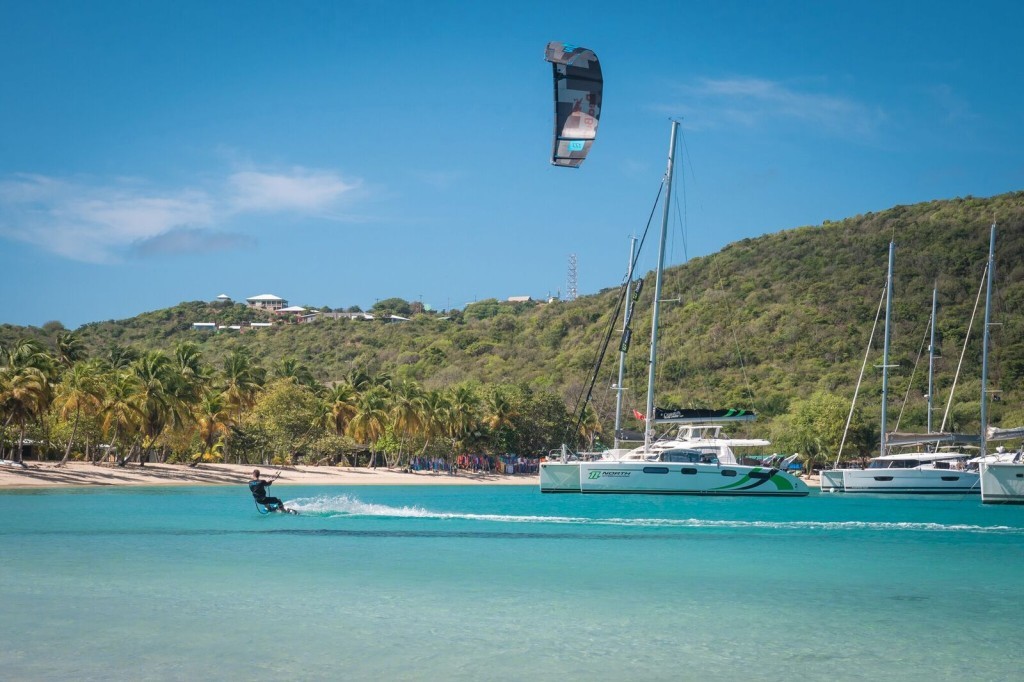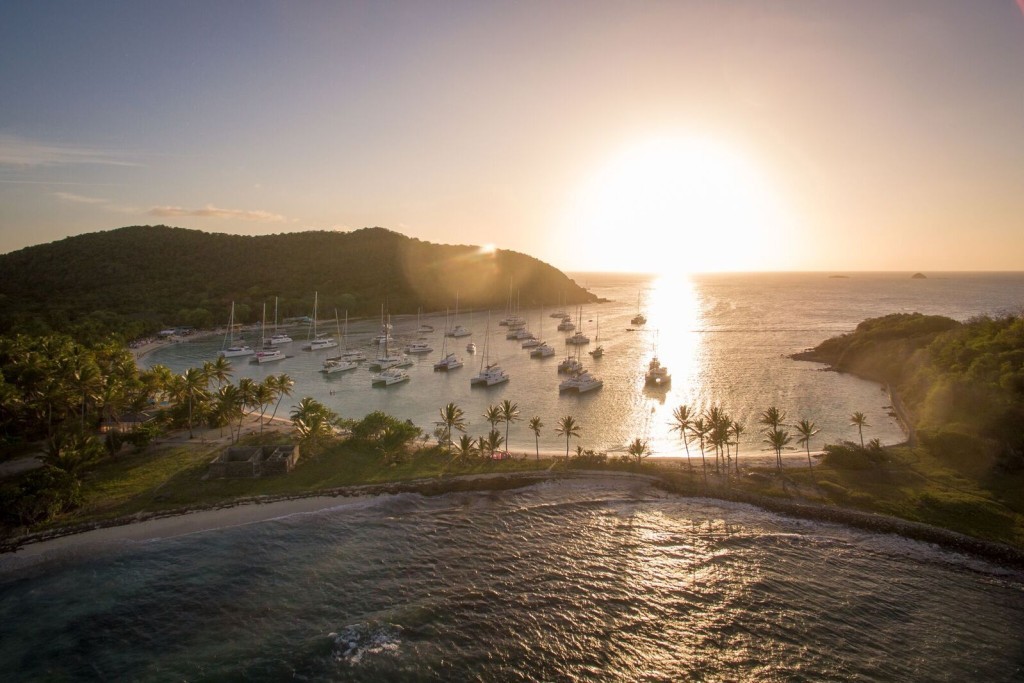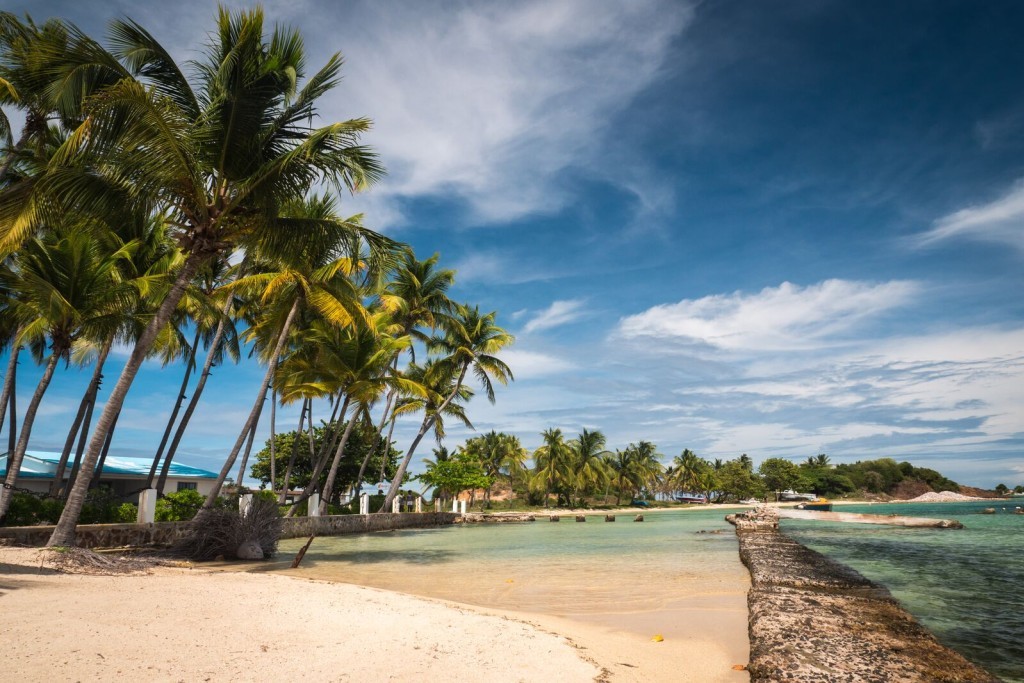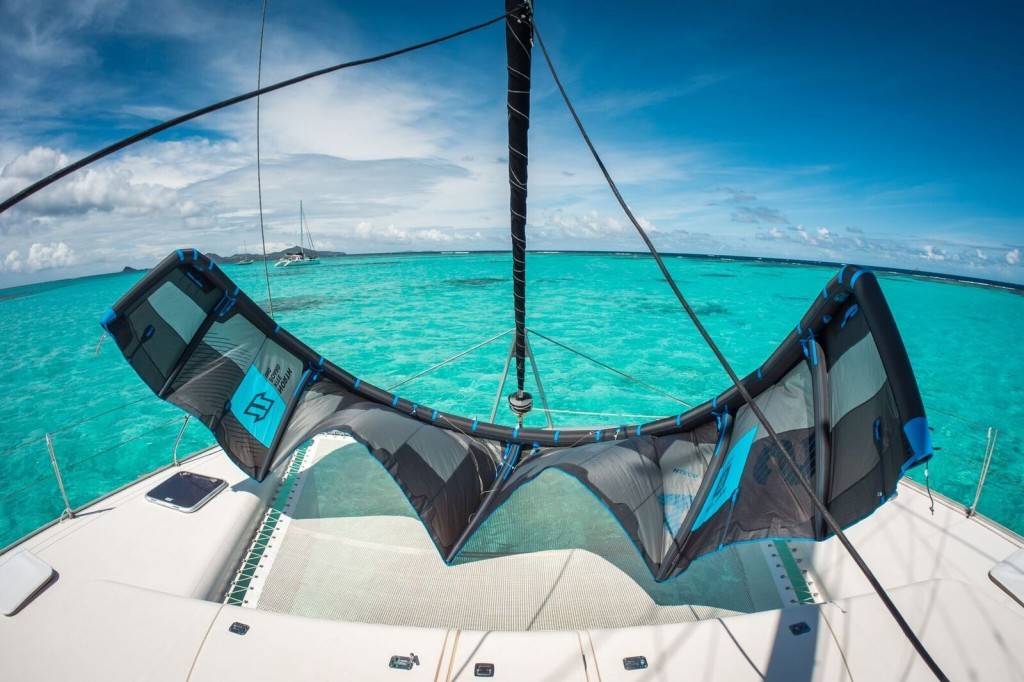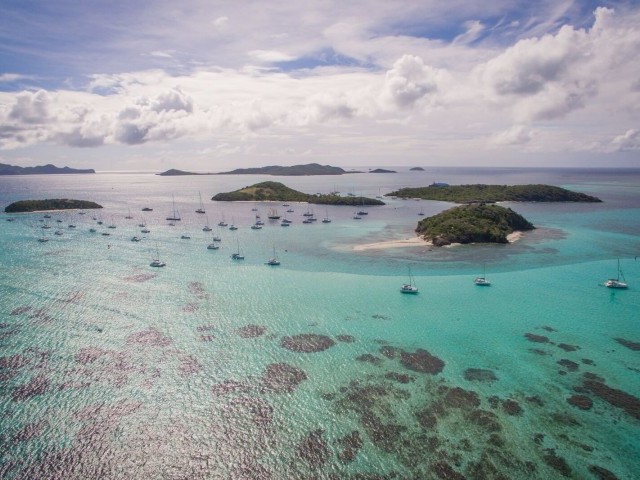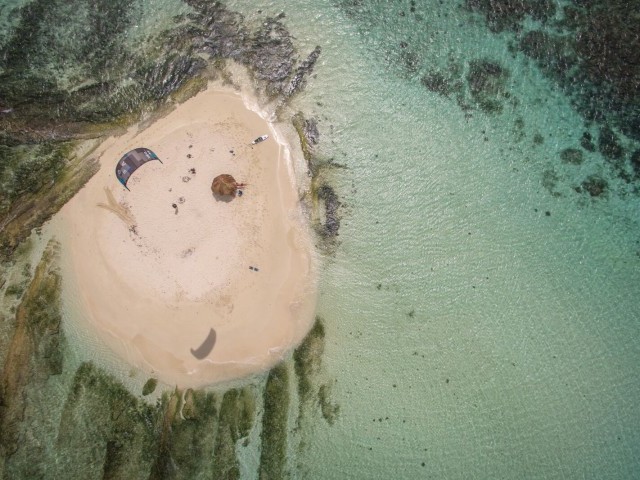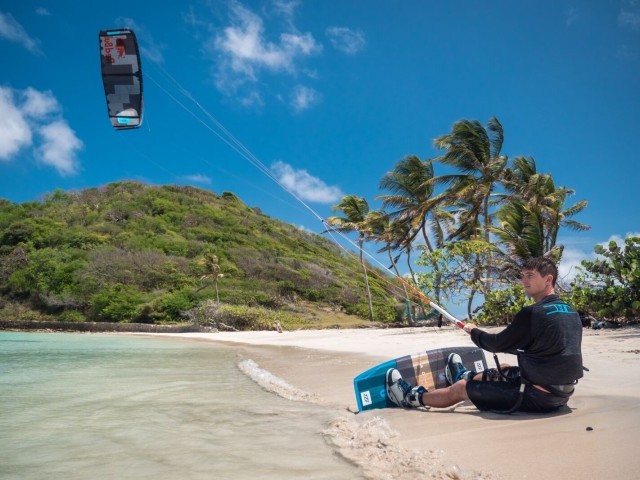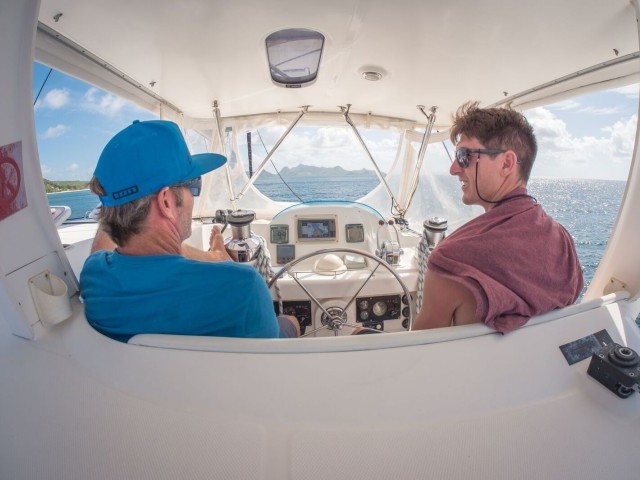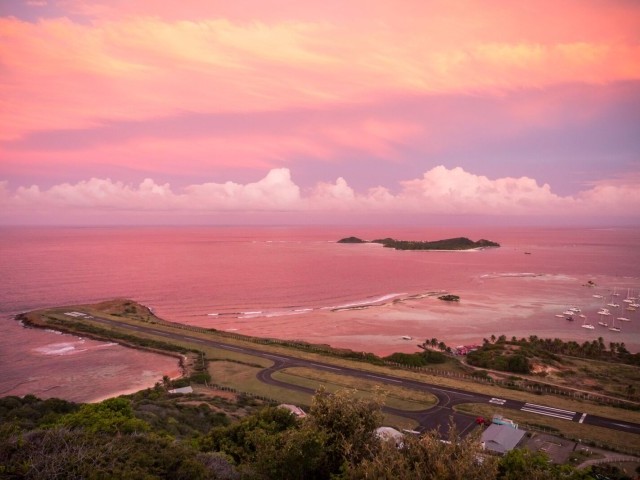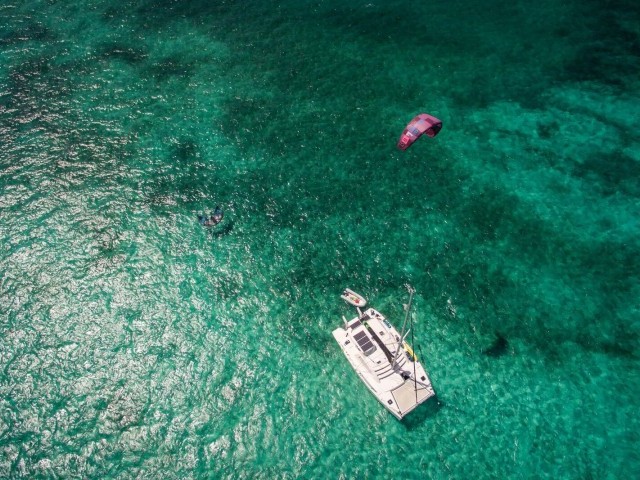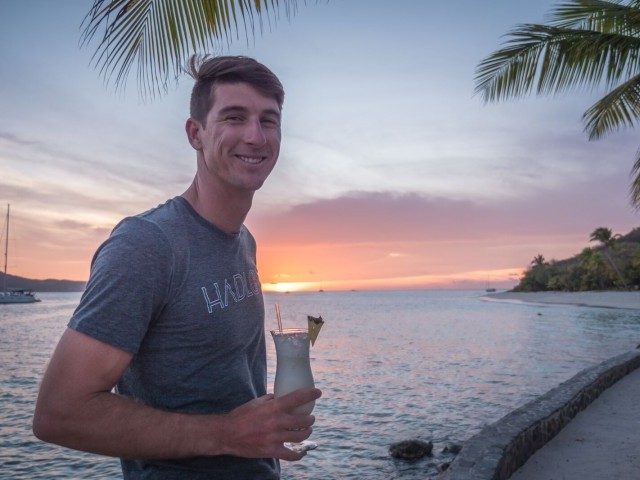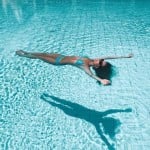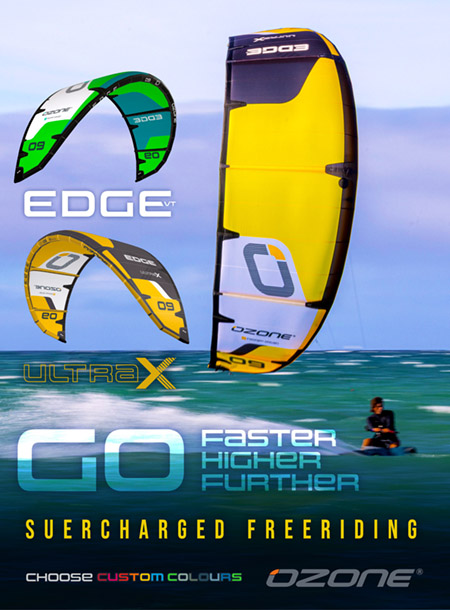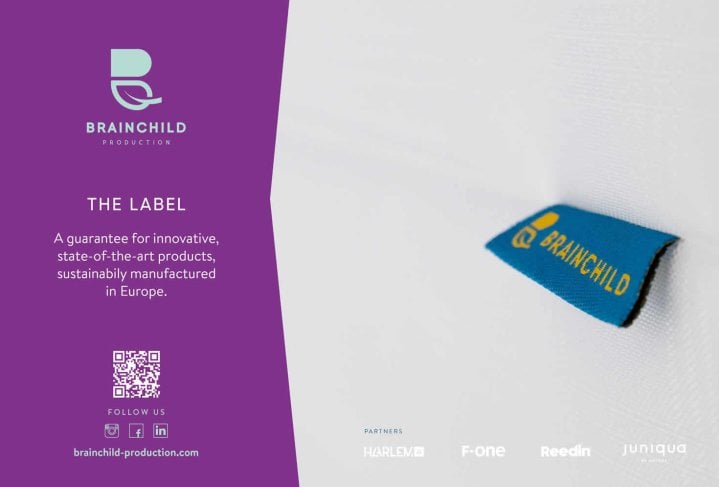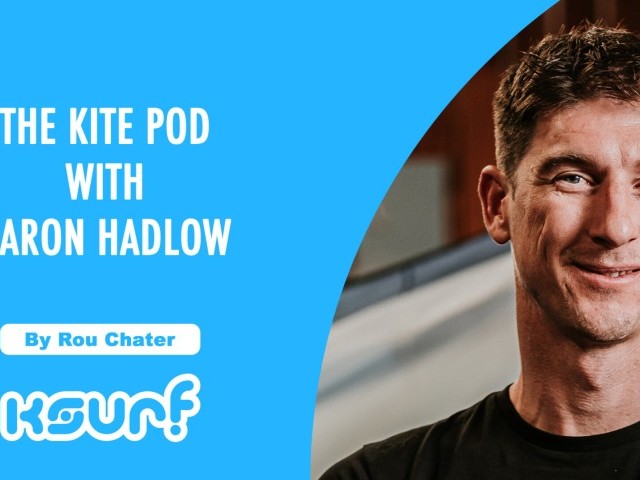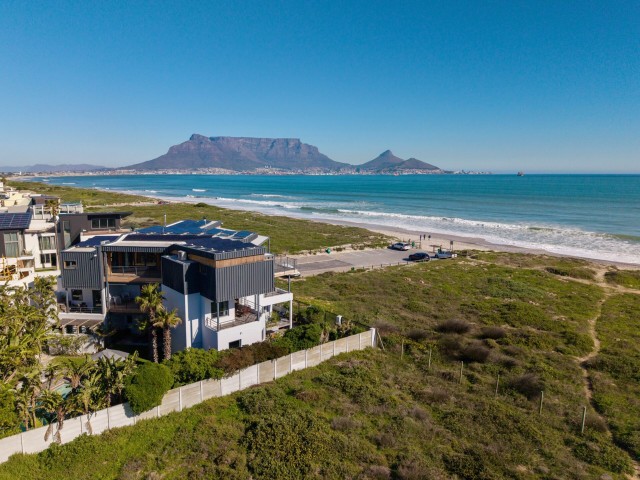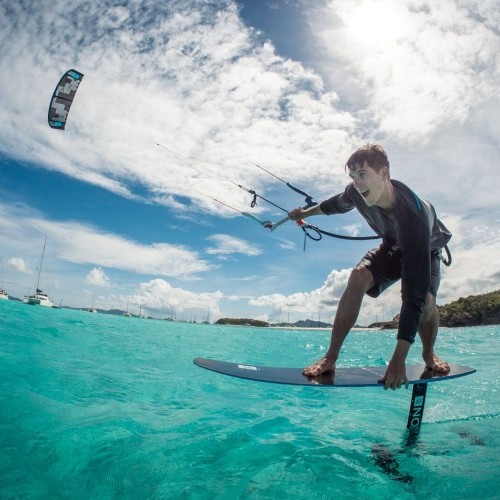
Aaron Hadlow: TWENTY “Caribbean – Freestyle”
Features / Fri 17th Aug, 2018 @ 12:00 pm
Check out our second instalment of “TWENTY” in our exclusive hook up with Laci and Aaron in The Grenadine.
In 2018, one of the most influential figures in kiteboarding, Aaron Hadlow, dedicated some time to film a full-length kiteboarding movie called “TWENTY” alongside Eastern-European filmmaker, Laci Kobulsky. In this feature, we take you behind the scenes from their second location in the Caribbeans. They went on board a catamaran from the Caribbean Kite Cruise fleet to shoot freestyle in some of the most incredible locations in The Grenadines.
Laci:
Second Stop – The Grenadines
After filming Big Air in Cape Town, Aaron and I both had a pretty clear schedule. We had a couple of locations in mind but we were keen to film somewhere remote in search of a “paradise” vibe for the movie. The Caribbean Sea had what we were looking for and it was the best time of the year to go as well. We were considering spots around Mexico or various Caribbean islands, but one idea stood out; a catamaran cruise around the Grenadines!
Lucky for us, on very short notice, Aaron was able to get us a spot onboard Caribbean Kite Cruise and three days before the trip, we got confirmation that it was happening. I was in the Swiss Alps at the time, so I packed up my stuff and within in few days, I was on the plane headed to meet Aaron in London. A couple of plane journeys later, we were on the last small plane headed towards Union Island.
The plan was to spend a few days on Union Island to warm up and train for Aarons new tricks, and afterwards board the catamaran for seven days. Unfortunately, during our stay on Union Island, we had cloudy days and no wind at all. We ended up doing some walking around, filming the next Aaron Airs episode (click here to check it out) and we attended an incredible full moon party at the JT Pro Center; that was unforgettable!
A few days later, we got onboard the catamaran. The owner of CKC, Richard, took the helm for this trip and he was remarkable. We knew we were in skilful hands and we were lucky to have the whole luxury catamaran just for ourselves, to cruise whenever and wherever we wanted. The wind forecast looked good, the sky cleared up and the Caribbean showed us some sunshine for the first time since we’d arrived; we were ready for some action!
Three Highlights From The Shoot:
- Freestyle in Mayreau: The first (and the best) location for our shoot was Mayreau; this place looked like a postcard! Kiteboarding here is usually performed on the upwind side, but if you want to get flat water and incredible watercolor, you need to try the downwind side. Unfortunately, the locals prohibit kiteboarding on the downwind side due to space limitations and danger to anchored yachts. We headed towards there in the early morning, hoping to get at least a few shots but shortly after, we were approached by the locals, they were wanted to fine us for kiteboarding there. Richard, our captain, managed to get us permission for a few more minutes at the spot and as soon as Aaron started doing his tricks, the locals realized that he was no ordinary kiteboarder! They enjoyed the show and allowed us to stay and shoot as long as we wanted. I would have been happy with just a couple of good shots at that location but we managed to get so much more than that! I was also able to film with the gimbal from the beach, from the water, the drone and even managed to get some still shots; what a day!
- Foiling at Tobago Cays: Location set for the ‘Pirates of the Caribbean’ movies, it’s easy to see why! These little patches of islands sit on the crystal-clear, pool-like turquoise sea. The spot was rather choppy for freestyle, so we ventured there during lighter wind days for some foiling. We took the drone out and it was a wrap, easy day!
- Dinghy shots at Frigate: For this project, we wanted to do something different and special in terms of what tricks were performed but also from a filmmakers side; I wanted something different. I knew that Frigate had some nice flat water spots, so I mounted my camera on a motorized gimbal, got in the dinghy and asked Captain Richard to drive the dinghy alongside Aaron. The wind was not perfect, but nevertheless, we managed to get some smooth shots of Aarons tricks. Some new moves were landed but we’ll keep those as a secret until the premiere!
Five Best Locations Of The Trip:
- Union Island: In front of the JT Pro Center, this is the most popular spot for kiteboarding in the area. The spot offers solid conditions for freestyle and on the island, you can find many good restaurants and shops.
- Frigate: Downwind from the main spot at Union Island, there is a spot called Frigate. It’s an old unfinished marina that connects the main island with a small island, creating perfect flat water. Although the wind is a little gusty, when the wind direction is just right, this spot is the perfect place for freestyle.
- Mayreau: Although Mayreau is a beautiful location, it’s not amazing for kitesurfing! The spot is quite tricky but worth a visit just to experience the vibe on the beach.
- Tobago Cays: This is where they filmed Pirates of the Caribbean – crystal clear water and beautiful sandy islands, turtles swimming around you; a truly ‘must-see’ in the Caribbeans!
- Morpion: Just imagine a small sandy patch in the middle of the sea, with a single palm tree, just big enough to set up your kite and have a cruise around, that’s Morpion! Just be cautious of the reef…
What’s Next?
Now that big air and freestyle are done, the park is next! Aaron was pioneering park riding long before it became popular. These days, we have the Kite Park League and prestigious events like Triple-S, where the best riders from all around the world match their kite skills on the obstacles. Aaron is a regular competitor in that event, so it was only logical for the USA to be our next destination.
Aaron:
Why did you choose to go shoot in the Grenadines?
I had never visited that part of the Caribbeans before and as we were in search of a “paradise” location that would also be suitable during that time of the year (April), friends of mine had shared plenty of great images from the area and I thought it could be a great option. I had previously been on a photoshoot with Caribbean Kite Cruise in the past, in other locations, so knowing Richard operated in the area, I gave him a call. Everything worked out perfectly with the timing, so we jumped on a plane and went for it.
What did you think of the area?
I did not have much knowledge of the area, so if I am honest I was expecting quite a few more kite spots spread out over a larger distance. In fact, there are only a few spots that are great for freestyle within relatively close proximity (see Aaron Airs EP2). Of course, the area is stunning, the classic Caribbean with whites sands and clear blue water, the islands are tropical and simply riding along is an experience in itself. There are some nice spots that are protected by a reef producing flat water and clean wind. Most spots are pretty unique, I really enjoyed the sessions there.
What was your favourite location to shoot at?
The main spot on Union Island was my favourite. The reef that protects the kiting area makes for some nice flat water, and within a few hundred meters you can find good spots for tricks in both directions as well as Happy Island; there were a lot of options for shooting and riding.
Did the “boat life” suit you?
I really enjoyed my time on the Caribbean Kite Cruise catamaran, one-two weeks was the perfect time frame for this trip as we had a job to do and a section to film but I can imagine exploring and sailing in my own time would be a different experience. In the past, it hadn’t appealed to me, but after learning how it worked and spending some time aboard I now could definitely consider it. It’s strange, as I felt quite confined and restricted on a boat, when in fact you are free to go anywhere and explore some amazing kite spots.
What was the highlight of this shoot for you?
The pressure lightened after collecting some amazing footage in the first few days. The highlight for me was that I was able to enjoy a chilled, cruising day in Tobago Cays, foiling in this beautiful spot and swimming with turtles.
How did you get into freestyle?
There were not different disciplines when I first started kiteboarding, not even one-footers! Freestyle has always been the roots of kiteboarding and will always be for me.
During the last few years, kiteboarding has really diversified and riders have concentrated solely on their favourite discipline. I have personally always tried to continue to improve my freestyle since the beginning and this has given me my greatest moments. Now, I have to choose where my focus lays (Freestyle, Big Air, and Park) I wish I could do everything but realistically it is not possible to be at the top level of them all.
What kept you coming back?
Progression is a massive part of the reason I continue to stay motivated, and of course, this helps you to win events! Landing a new trick and using it to compete and win is just an unbeatable feeling.
What do you see as your biggest contribution in freestyle?
I would like to think I helped in pushing the sport in the right direction. I have always been about quality over quantity, and rewarding a trick, executed properly or with added elements before a slightly more technical trick that is poorly performed. I would also like to think that some video projects help contribute to the community and maybe help the sport grow.
If you look at the state of the freestyle tour and online media these days, maybe it is not in the best shape but that is just how times have inevitably evolved, that’s why I always look for new innovation in all aspects.
When you first started freestyle, was it clear to you that this discipline will take over the World Tour?
When I first started competing, that was all that was available and in the years when I won my first freestyle titles, it was still totally dominant. We had some other disciplines attached to the World Tour, although these were secondary and freestyle was 100% the priority.
As the years went on kiteboarding fragmented into many forms and naturally people focussed on different parts, it is a natural evolution of such a free sport. I had always believed the most talented and the best riders, were those who are at the top of the game in freestyle. For me, it is still the most technically difficult discipline to master but recently we have seen equally talented riders in other disciplines emerge as the new generation of riders decides to focus on another discipline other than freestyle.
Many disciplines will have their limits pushed and at some point and we will no longer be able to say one thing is more difficult than the other.
You were quite early to start riding with boots, what made you try them?
I was quite influenced by wake style riders and events like the Triple-S in 2009. My riding was very much focused on style and simplicity, but I felt I was fighting an uphill battle against the format.
During the years that followed, I converted most of the tricks that I could do in straps over to boots, I found I could go bigger, smoother and land cleaner. Even though it was riskier and crashes were a lot harder, I felt more comfortable as time went on and I figured it gave me a pretty big advantage.
For 2 years, I focused on it and in 2012 I saw the format change on the World Tour and it made riding boots possible as it focuses on a limited amount of tricks. A few months before the first event, I blew my ACL and was out for a year solid.
In 2013, I was back and in good shape. I made the podium on my first competition back but 1 year out the game is a long, long time at the top of a professional sport and in this time the majority of riders changed over to boots too.
What are your biggest achievements in freestyle over the years?
Having five official consecutive world titles is of course hard to beat, but from a personal point of view, some of the later wins meant more to me. The sport provides so many highs and lows, and I have never been so down as when I blew my ACL and this is why finishing in 3rd place meant so much to me one year later.
The dedication to getting back felt like it paid off and after that moment, and after so much success in the past nothing but getting back to 1st would matter to me. My first win the following year was in Germany, once I finally was fully recovered and had time to prepare, this was probably right up there with my biggest personal achievements.
Have you been working on some new moves during this shoot?
New moves come in different forms now, although progression in freestyle is slowing down, Big Air and Park still have a way to go. With freestyle, my perspective has changed, I guess there are only so many rotations possible before the move loses its execution. I have tried a few new things, maybe they wouldn’t make the cut at the World Tour final but things are changing; creativity and something different can still leave an impact.
In recent years the freestyle world tour struggled, while other tours like KPL, GKA strapless & race emerged. Do you think there is still a room for freestyle to progress and be the “main” freestyle discipline or we should see some other developments?
My heart lays with the freestyle World Tour, it is such a shame it has gone the way it has. I would love to see it emerge as the main discipline once again, as I feel the riders deserve it for the level that they are at right now. Things are changing like I said before, young talents are focusing on other disciplines and these other tours are gaining momentum. I don’t think there will be the main tour in kiteboarding in the foreseeable future, maybe a clearer, simplified structure where people understand what is what and who is who in terms of world champions, although I would expect the disciplines/tours will become somewhat equal one day.
Text: Laci Kobulský and Aaron Hadlow
Photos: Laci Kobulský
Check out our first instalment of “TWENTY” by clicking here.
By Jen Tyler
Italian/Egyptian Jen Tyler grew up on the sandy beaches of the Red Sea and has been on the IKSURFMAG & Tonic Mag team since 2017.


